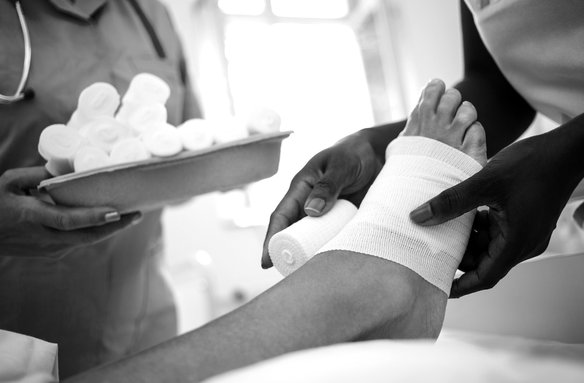Surgery

The London Podiatry Centre houses its own CQC registered, purpose built, operating theatre where many types of operation are performed.
Pre-operative gait analysis for surgical planning.
The London Podiatry Centre is staffed by podiatric surgeons who use gait analysis to determine the best possible operation for a patient. The foot is a complex structure and operations are determined not only on the basis of their ability to resolve pain but also that function will improve.
Mr Ron McCulloch, Consultant Podiatric Surgeon, has over 25 years of experience in surgical management of foot related conditions. Over his career he has developed a number of innovative and groundbreaking procedures, many of which involve ultrasound guided techniques to achieve the desired surgical outcome with minimum trauma. Because of the extensive range of procedures we perform at The London Podiatry Centre we would ask patients to contact us in order to discuss their specific requirements regarding any surgical procedure.
Below is a list of common conditions which patients present with at The London Podiatry Centre.
Hallux valgus deformities (bunions)
The use of advanced internal fixation systems (tiny screws and plates) in the vast majority of cases of hallux valgus correction surgeries avoids the need for casting, which maximises the return to normal function. Bunion deformities are a common complaint and they pose a number of consequences to foot function. Whilst the great toe itself may be painful, the deformity often causes secondary drift of the lesser toes which also requires correction on many occasions.
Hallux rigidus (stiff arthritic great toe joint)
The London Podiatry Centre offers a number of techniques to manage this extremely common condition including minimally invasive surgery. One of the ground-breaking techniques used at The London Podiatry Centre is the use of an interpositional joint arthroplasty. In this instance specialist anchors are used to create a joint using the patient's own tissues. This procedure is only undertaken when the joint has been completely worn down by arthritis. It involves sowing a flap into the area where the joint previously existed to restore movement of the great toe joint. This procedure avoids some of the pitfalls of alternative procedures such as great toe fusions which can cause complications by not allowing the great toe to bend at all, and the possible manifestations from this operation include knee, hip and back pain. Artificial joints are rarely used by the The London Podiatry Centre as the interpositional arthroplasty affords a number of benefits and artificial joints may be rejected and often cause extreme stiffness and compromise function.
Realignment surgery of the lesser toes
Many patients attend The London Podiatry Centre with concerns about painful corns and calluses affecting their lesser toes. This may be associated with a bunion deformity. The London Podiatry Centre uses a number of advanced and innovative techniques to correct claw toes, hammer toes, mallet toes. For more information please visit our website cornsurgery.com for detailed information.
Metatarsalgia including Morton's neuroma
Metatarsalgia is defined as pain around the metatarsals. Examples include stress fractures and ligament (plantar plate), tendon , joint and nerve conditions. Other causes include bursitis (a painful fluid filled bag in the foot), exostosis (painful bony protusions) and arthritis.
Morton's neuroma represents a thickened nerve, typically between the 3rd and 4th toes. Such digital nerves can also become thickened between other toes in which case the condition is called an inter-digital neuroma. The London Podiatry Centre offers a wide range of effective treatments for Morton's neuroma, including cryosurgery. Please visit mortonsneuroma.surgery for further specific information.
Gait analysis is particularly effective at diagnosing abnormal patterns of movement and pressure that can lead to metatarsalgia. By treating these patients usually improve.
Abnormalities of the skin including verrucae
The
London Podiatry Centre has a high success rate in treating verrucae and
we often resolve the lesions where other practitioners have failed. We
utilise advanced techniques including controlled depth excision and a
specific type of cryotherapy which is more effective in the management
of the condition.